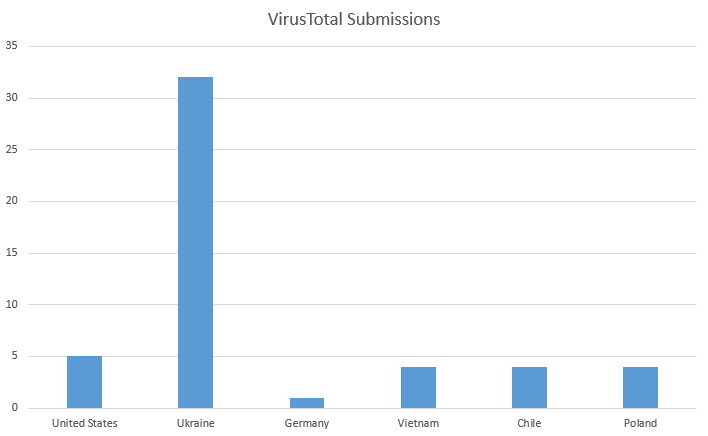Understanding the Kaspersky Compromise Assessment Service
A question for many businesses these days isn’t “Will we get hacked?” but rather, “Might we have already been hacked unknowingly?” The stealthy nature of advanced cyberthreats means that organizations need to be continuously vigilant. To safeguard sensitive data and critical systems, many turn to various cybersecurity services – including compromise assessment services. While compromise assessment may sound similar to incident response, penetration testing, and/or managed detection and response (MDR), it serves a distinct purpose in the realm of cybersecurity. In this post, we explore the concept of a compromise assessment service and show how it differs from these other crucial cybersecurity operations.
What is a compromise assessment service?
A compromise assessment service is a proactive cybersecurity project-based measure designed to identify signs of compromise within an organization’s IT infrastructure. This assessment focuses on detecting threats or suspicious activities that may have gone unnoticed within an organization’s environment. The primary objectives of compromise assessment are typically the following:
To perform a tool-aided indicator of compromise (IoC) scan of all hosts in the IT infrastructure
To analyze network activity, including outgoing connections to potential attackers’ command and control servers
To conduct initial incident investigation to identify tools and techniques used for the attack (if signs of network compromise were found)
To reveal suspected sources of an attack and other likely compromised systems
To provide recommendations on further remediation actions
What’s the difference between compromise assessment (CA) and incident response (IR)?
Incident response is a reactive cybersecurity process, which comes into play once a security incident has been detected. IR teams are responsible for investigating the nature and scope of a breach, containing it, eradicating the threat, and restoring normal operations. Incident response aims to minimize the impact of security incidents and prevent their reoccurrence.
Both CA and IR share common approaches and methodologies – including collection and analysis of digital forensic artifacts (Prefetch, Amcache, etc.), usage of IoC-scanners to find compromised hosts, and binary reverse engineering to prove the presence of malicious functions in certain programs or scripts.
The primary differences between CA and IR are:
Aspect
Compromise assessment
Incident response
Primary goal
To identify missed/unknown incidents
To reduce the impact of an identified security breach or an attack on your IT environment
Input data
Doesn’t require technical data for the input
Requires technical data for the input: alert from security control, suspicious file, signal about data leakage, ransom note, etc., which obviously prove that an incident has occurred
Timing
– Periodic assessment project
– Precedes IR in identifying an incident
– Can follow IR to make sure of no other compromises
– Is initiated after security incident detection
– Follows compromise assessment if a breach is detected
Scope
Broad scan across entire organization’s network to find all signs of compromise
Only the network segments affected by the reported incident
What’s the difference between compromise assessment and penetration testing?
Penetration testing – often referred to as pentesting – is a simulated cyberattack on a system, network, or application to evaluate its security vulnerabilities. The primary goal of a pentest is to identify potential weak points that malicious hackers might exploit, thereby allowing organizations to strengthen their security posture.
Both penetration testing and compromise assessment activities require skilled professionals with a deep understanding of cyberthreats and defenses. While they have different primary objectives, both are proactive measures to understand and improve security.
The key differences between a penetration test and a compromise assessment.
Aspect
Penetration testing
Compromise assessment
Objective
To identify vulnerabilities before they’re exploited
To identify instances of successful exploitation of vulnerabilities
Scope
Predefined (e.g., specific systems, applications)
Typically, the whole organization
Methodology
Simulated cyberattacks using tools and manual techniques
To examine logs, network traffic, anomalies and system behaviors
What’s the difference between compromise assessment and managed detection and response
Managed detection and response services involve continuous monitoring, threat detection, and incident response by a third-party provider. MDR combines technology, human expertise, and threat intelligence to identify and respond to security threats in real time. The focus of MDR is on providing a holistic cybersecurity solution that includes both monitoring and response capabilities.
Both CA and MDR use a combination of advanced technologies, threat intelligence, and skilled analysts to identify potential security breaches and suspicious activities within an organization’s network.
The key differences between CA and MDR are as follows:
Aspect
Compromise Assessment
MDR
Timing
-Periodic assessment project (one-time assessment)
– no SLA for notifications
– Continuous 24/7 activity (ongoing service)
– Strict SLA for notifications
Analysis focus
– Past and current attacks
– Forensic state analysis
– Current attacks
– Behavioral monitoring
Sources of data for analysis
– EDR/NTA
– SIEM
– Digital footprint intelligence (darknet)
EDR/NTA
Conclusion
As cyberthreats become increasingly sophisticated, the traditional reactive approach to cybersecurity is no longer sufficient. A compromise assessment service offers a proactive solution, ensuring that organizations aren’t just waiting for the next breach but actively seeking out and neutralizing latent threats. By conducting such assessments, you can eliminate the residual risk of being breached without notice.
A compromise assessment service plays a critical role in proactively identifying potential compromises and security weaknesses within an organization’s network. While it may share some similarities with incident response, penetration testing, and managed detection and response services, it’s a project-flow activity whose primary focus is on proactive identification of unnoticed attacks that bypassed an organization’s security systems and processes.
Understanding the differences among these cybersecurity practices is crucial for organizations seeking to build a robust defense strategy. Each service has its place in an organization’s cybersecurity posture, and they can complement one another to create a comprehensive and effective corporate security framework. You can learn more or contact our Kaspersky Compromise Assessment experts at the service’s web page.
Kaspersky official blog – Read More


